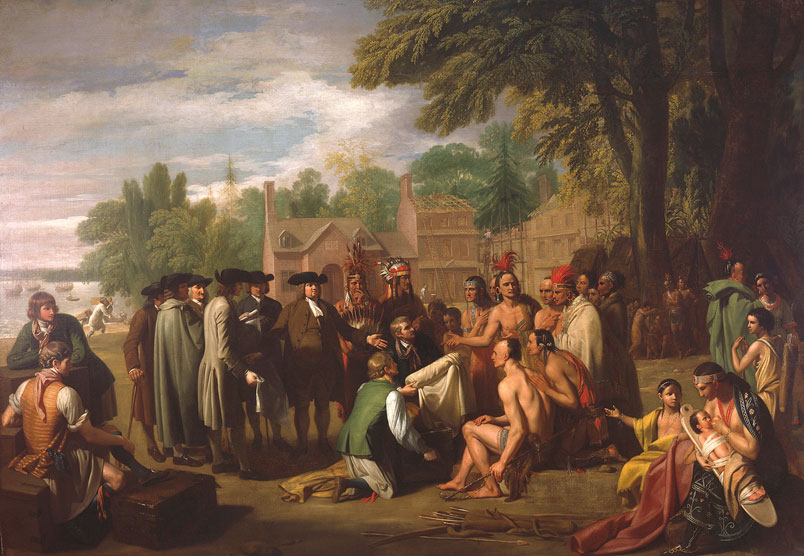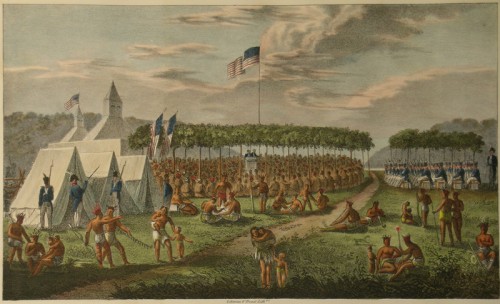Native Nations and the Newcomers
During the 1600s, Spanish, French, Dutch, Swedish, and English colonizers all contended for a foothold on the American continent. Native Americans generally greeted the newcomers with cautious hospitality and goodwill. They seem to have been impressed by the Europeans’ technology, particularly their ships, guns, and metal tools, but shocked by their appearance, language, and behavior. Europeans frequently claimed that Indigenous people regarded them with awe, as godlike. Native people themselves, however, regularly dismissed European pretensions to superiority and sometimes poked fun at Europeans’ ineptitude in coping with their new environment.
North America was not a “new world” in 1492, but rather a very old one with a history far lengthier than what has followed since. When European newcomers arrived, there was no part of North America that was not claimed and ruled by sovereign Native nations. These Indigenous nations governed and defended territory and boundaries, but in ways that differed from Europeans as well as from each other. Frenchmen and Spaniards found no empty spaces into which to expand their empires. Instead, newcomers had to seek Native acceptance and permission to build settlements, trading posts, and missions within recognized Indigenous domains.
When the newcomers struck out into what they believed was the wilderness, they found instead networks of Native American roads and thoroughfares. They crossed borders marking passage from one Native nation to another, and they met forms of border control. It was important for the newcomers to know whose land they were in because their survival might rest on that knowledge. Europeans did not merely travel through Native homelands; they had to negotiate constantly with the Native nations that were the owners and stewards of the territory.
In the Great Lakes region, Native nations were dynamic and evolving entities that responded actively and creatively to the presence of European newcomers. They found productive ways to incorporate the newcomers into their world, and they also bent European colonialism to their advantage. The Anishinaabeg and the Dakota were two of the largest, most successful, and most politically diverse Native groups to dominate the region. They occupied and controlled the vast majority of the upper Mississippi region until the middle of the 19th century.
Resources
- Calloway, Colin. First Peoples: A Documentary Survey of American Indian History. New York: Bedford/St. Martin’s, 2011.
- Sleeper-Smith, Susan, Juliana Barr, Jean M. O’Brien, Nancy Shoemaker, and Scott Manning Stevens, eds. Why You Can’t Teach United States History without American Indians. Chapel Hill: University of North Carolina Press, 2015.
- Witgen,Michael. An Infinity of Nations: How the Native New World Shaped Early North America. Philadelphia: University of Pennsylvania Press, 2013.

Benjamin West (American, 1738–1820) Penn’s Treaty with the Indians (detail), 1771–1772. Oil on canvas, 75 1/2 x 107 3/4 in. (191.8 x 273.7 cm.) Source: Pennsylvania Academy of the Fine Arts, Philadelphia. Gift of Mrs. Sarah Harrison (The Joseph Harrison, Jr. Collection), 1878.1.10.

Dakota and Ojibwe Lands, ca. 1768. Jonathan Carver, from Travels through the Interior Parts of North-America in the Years 1766, 1767, and 1768, 1778. Source: James Ford Bell Library, University of Minnesota.

James Otto Lewis, View of the Great Treaty Held at Prairie du Chien, 1825. Source: Joseph F. Cullman 3rd Library of Natural History, Smithsonian Institution Libraries

